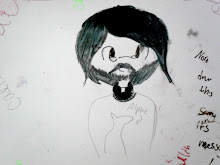In one of my previous entries, I talked about how beautiful Montevideo is - the beaches, the palm trees, and so on. And, it´s true. Montevideo, or at least parts of it, are glorious. However, that´s only half of the story.
After the economic crisis of 2001-2002, roughly 1/3 of Uruguayans were living below the poverty line. Economic recovery over the past few years has slimmed that number to about 1/4, but that´s still a huge segment of the national population. La Obra, where I work, is in one of the neighborhoods which reflects this economic reality. I live on the edge of the downtown area; La Obra is another 30-40 minutes on the bus past me. It´s a different world from Las Ramblas and Plaza Independencia out there. The European charm of the city center is far from here, as are many basic public services. It is a cash-poor neighborhood where people struggle to get by, and it´s marked by many of the problems that (sadly) we tend to identify with poverty - domestic violence, unsanitary living conditions, low levels of general education.
Some of the problems are logistical - take education, for example. It is an enormous challenge for a young person in the barrio to get their high school education, even though school itself is free. What isn´t free, however, is transportation to the nearest liceo, which is on my way out to the barrio, some 25-30 minutes from La Obra. That bus ride costs money that a lot of people simply can´t spare. The city, also, has more-or-less decided that "those people" in the barrio are just going to live in the squalor of the poor anyway, so markedly less effort has been made to promote recycling, and there are fewer public trash receptacles.
However, some of the issues are spiritual, and that´s where La Obra comes in. La Obra´s programs help provide support for students trying to succeed in their schooling, a safe, welcoming place for young people and kids where they can learn life and job skills and be guaranteed at least one nutritious (and tasty) hot meal a day, and where women in the community can come and be supported in the struggles they face in their homes and in society.
There is a lot of darkness in the barrios of Montevideo, but there are lights in the midst of that darkness, piercing through the haze to provide answers to questions, love instead of hate, and peace in the midst of turmoil. It´s not easy, but it has to be done if these two cities of Montevideo - the beauty and the mess - are to become one community.
Monday, September 17, 2007
Subscribe to:
Post Comments (Atom)

No comments:
Post a Comment